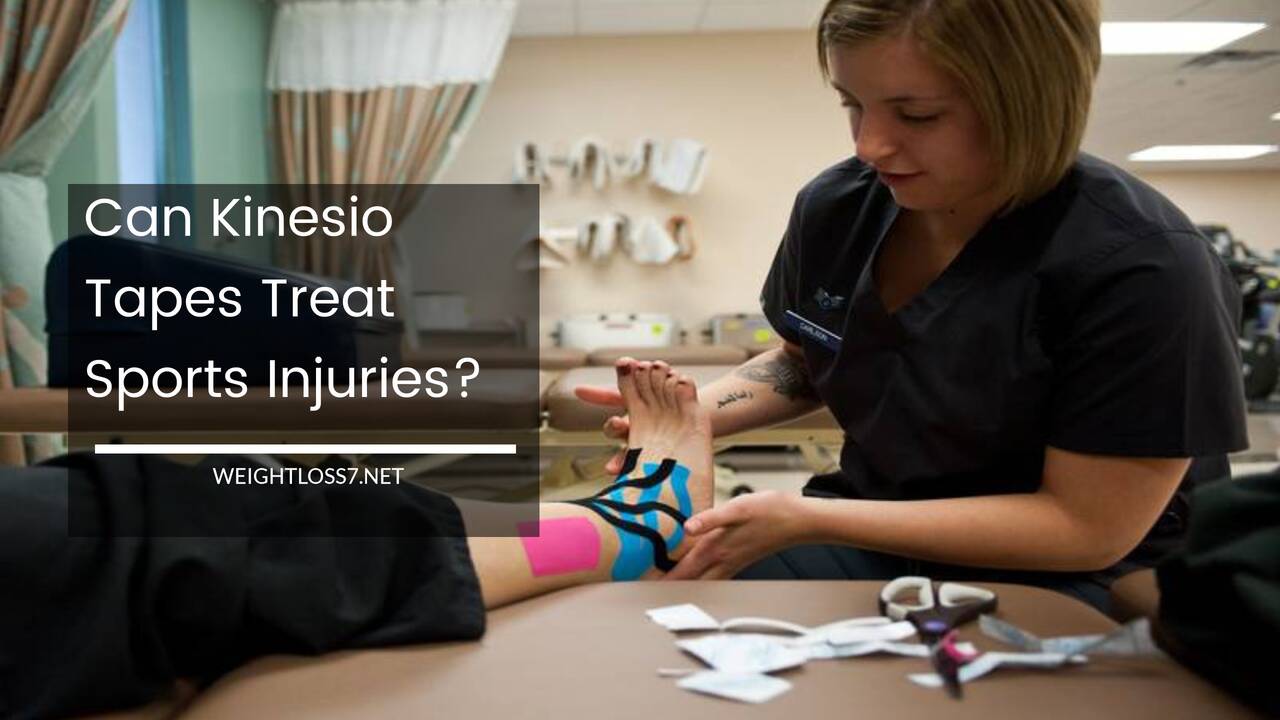Can Kinesio Tapes Treat Sports Injuries?

Physiotherapists and doctors are now discovering a method of treating sports injuries that was in the oblivion for years – injury management with the help of Kinesio Tapes.
While technically Kinesio Tapes may not qualify as a pioneering technology or method, it definitely is convenient and is now being used on a lot of athletes.
Kinesio Tapes were the brainchild of Dr. Kenzo Kase, a Japanese chiropractor. Kinesio Tapes promises to eventually become the buzzword in sports injury rehabilitation practices.
However, there are people, who observe that before Kinesio Tapes becomes a standard method of treating sports injuries, it must pass through long and stringent evaluations.
What are Kinesio Tapes?
Simply speaking, Kinesio Tapes replicates certain kinds of massage therapies that can alleviate pain. The injury first needs to be assessed.
According to Dr. Kase, the main source of pain lies in the area between the epidermis and dermis layers in the skin. Dr. Kase observes that when an injury occurs, the area between the epidermis and dermis layers becomes narrow and restricts the flow of blood and lymphatic fluids.
The tape, when applied locally, widens the region and facilitates freer movement of lymphatic fluids and blood.
Dr. Kase points out, “I needed to create something to lift these layers.” So, the basic principles behind the Kinesio Tapes are cooling, flow and space.
How Has Kinesio Tapes Been Received in The Medical Fraternity?
The reactions have been mixed. There are some who are enthusiastic about it. According to Paul Hobrough, a physiotherapist, the unique thing about the Kinesio Tapes is that athletes can continue to practice or play even with the tapes on.
While the Kinesio Tapes is the same as the tape method that was used to patch injuries up for years, the similarity ends there.
Hobrough points out that other tape would restrict movement but Kinesio Tapes does not inhibit movement. On the contrary, it encourages right movements.
Academics are not so enthusiastic yet, however. According to John Brewer, professor of sports at the University of Bedfordshire, “We need to be very cautious about the extent of the claims, some perhaps aren’t yet supported by science and I am struggling to see where the science is going to come from.
Many of the muscles involved in exercise are deep muscles. Placing strips of tape on the skin is going to have little effect on supporting these muscles within the body.
We need osteopaths and physios to do proper, peer-reviewed studies to show it really does work.” Even Paul Hobrough cautions that the tapes should not be treated as a panacea.
So, Is The Kinesio Tape Really Good?
Time for conclusion has not come. Whatever the findings are eventually, Kinesio Tapes do have some good points in its favor. But it should not be treated as a magic formula to treat all kinds of sports injuries.
Rigorous clinical trials can establish the efficacy degree of Kinesio Tapes and that will take time.
The first objective of the clinical trials would be to find out the actual efficacy, if any, of the Kinesio tapes on human beings.
That established, it will be time to find out the duration or longevity of the efficacy. Last, but not the least, Kinesio Tapes must not have any type of side effects.
Kinesio tapes must show that it can at least alleviate pain, if not cure it. The scientists need to evaluate the contents of the tape and find out their effects on the human body, when applied. Also, the effect needs to last longer to be marketable.
Image Credit: WikiMedia

















